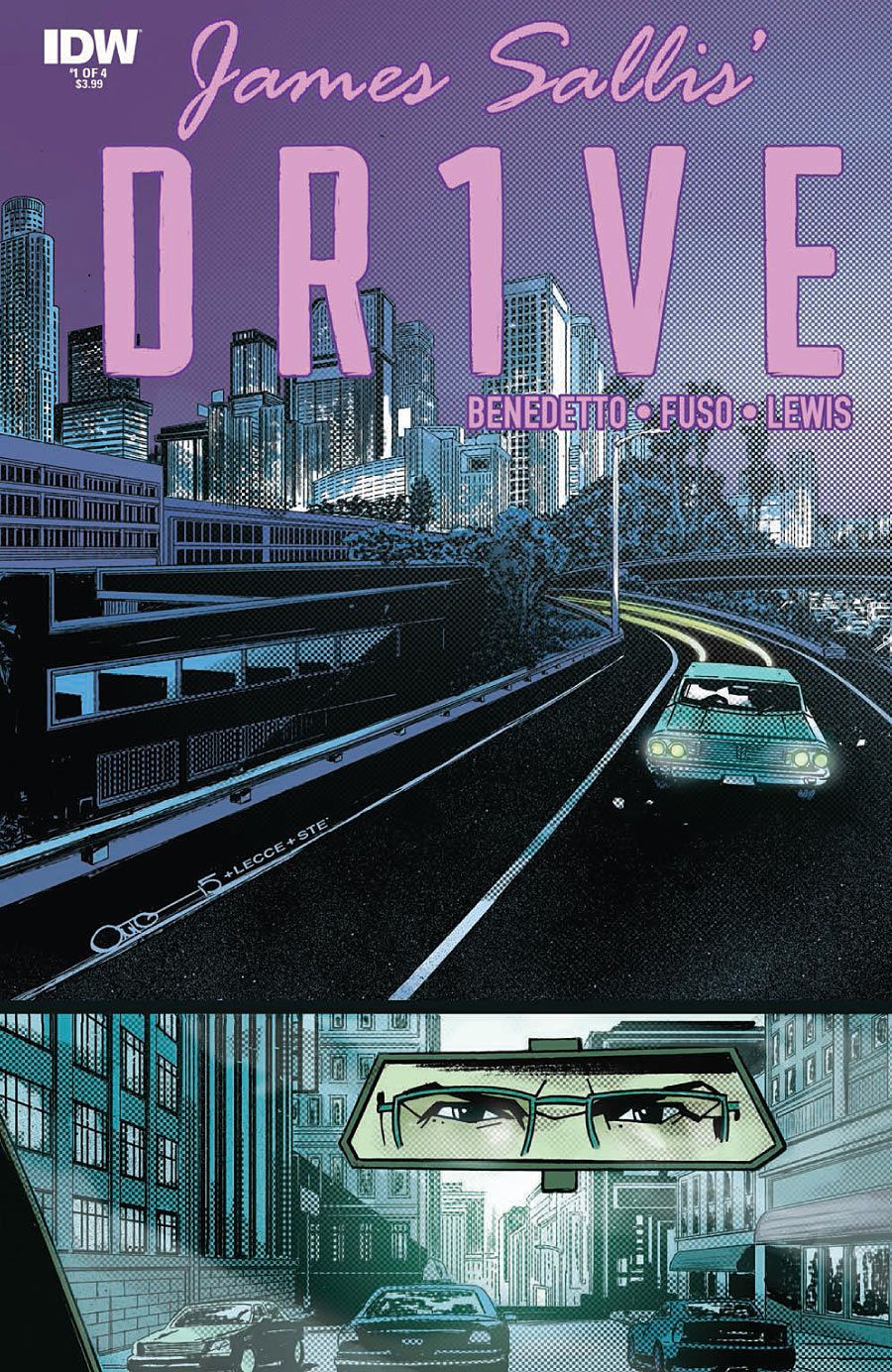Michael Benedetto, Antonio Fuso and Emilio Lecce's "Drive" #1 is a comics adaptation of James Sallis' cult novel of the same name, which was a neo-noir take on the archetypal themes of a conflicted antihero and a heist gone wrong.
Benedetto is faithful to the style and plot of Sallis' novel. He reproduces the attention-grabbing opening scene well, and he leaves much of Sallis' prose unchanged throughout. Compared to the book, there's a lot less internal thought monologue from the Driver; Benedetto lets Fuso and Lecce's art do a lot of the descriptive work.
However, mid-issue, he does dramatically shorten a scene that gets longer dialogue and deeper characterization in the book. Irene, the Driver's love interest, is introduced, but the two barely exchange a hello. Benedetto might have made this decision so that the first issue would have more action and less talk, but he'll either have to return to the hallway scene or flesh out Irene some more later, because he'll need to show more of a bond for the reader to believe that the Driver will get involved on the behalf of this damsel in distress. The action doesn't make sense psychologically if that bond doesn't hold up to scrutiny. However, with only four issues, it's uncertain whether Benedetto will have the narrative space to do it. A four-issue miniseries doesn't allow for the same depth of storytelling as a novella or an hour and a half-long movie.
Fuso's linework and Lecce's inks are clean and angular, and the sharp contrasts they produce go well with the mood of the story. Lewis' palette of cool-toned neutrals and faded, lurid neons suit the tone of the book and the setting of L.A., but it's very subdued compared to the vivid cinematography in Nicholas Winding Refn's 2011 film adaptation of the same story.
In the deal-making scene with Cook, Benedetto uses dialogue from the novel, but Fuso's unconvincing body language doesn't pull off the Driver's laconic, macho lines with the force of Ryan Gosling's acting in the film adaptation. There's the same problem with scene in which the Driver insists on reshooting a stunt sequence. Fuso's facial expressions for the Driver make him look pouty and diva-like, when the emotional dynamics of the scene suggest that he is supposed to look unmovable and cold. The car chase scenes also lack adrenaline-filled tension and energy, and that's unfortunate for a story that revolves around driving.
The ending of "Drive" #1 is too abrupt and cuts the story off without wrapping things up with the closure of a typical cliffhanger. It's not automatically a bad move to end the first issue in this spot but, if so, the pacing should be adjusted so that the shape of the ending has a longer finish.
Adapting a story into another medium is like translating a book into another language, but it requires even more daring. Unlike translations, which are sometimes admired just for being faithful to the original, the best adaptations add new layers of experiences while staying true to the spirit of the original work. "Drive" #1 is a successful translation into comics and, for all its flaws, it captures the flavor the original story. However, it's inevitable that it will be compared to the film, which transcended Sallis' novel.
Judged by itself, "Drive" #1 is a workmanlike translation of the story of Sallis' novel. Unfortunately, compared to the film, it falls short in artistry, style and imagination. This is going to create a divide in the reception of this comic. Readers who saw the film will probably be disappointed, while those who only read the book or are new to the story won't nitpick so much.

